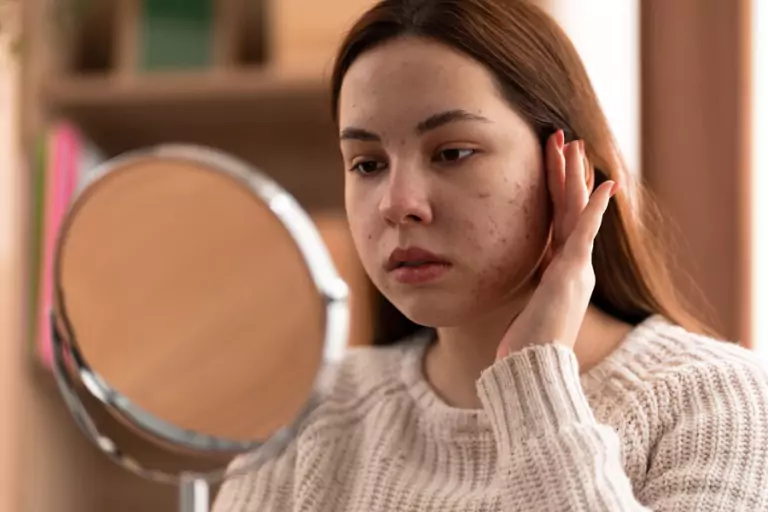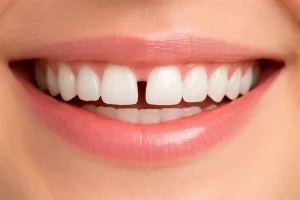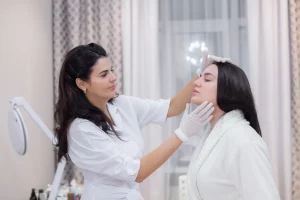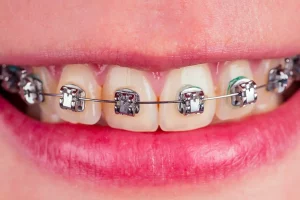People get frustrated over acne. After struggling with acne, it leaves a scar. Acne scars can be hindering for people since they might lower their confidence.However, the good news for them is that these scars are also treatable and can be reduced from the skin. Sometimes, they could be totally removed. Have you ever wondered how one gets treated with acne scars? Well, this blog will guide you through the basics of what is termed acne scar treatment. Whether you’re considering laser treatments, chemical peels, or home remedies, this guide will help you.
Types of Acne Scars
Acne scars appear in a variety of shapes and sizes, and understanding your exact kind might assist you in selecting the best treatment option. The most prevalent forms of acne scars are:
- Hypertrophic Scars: Raised and thick with tissue that increases the healing process.
- Ice Pick Scars: These are deep, narrow scars with a characteristic look of small holes on the skin.
- Rolling Scars: These are wave-like in appearance and create unevenness on the surface of the skin.
- Boxcar Scars: This type of broad scar is characterized by sharp edges that make the skin appear rough and uneven.
The variety of scars needs different treatments, so knowing what kind of scar you have can help treat it better.
When Should You Start Treating My Acne Scars?
The problem is that you are tempted to start right away. But waiting until the acne is fully under control can make the difference. If you treat active acne at the same time as scars, the process will only be hard to understand and also less effective. Key points are:
- Active Acne vs. Scars: Start treatment only when acne is no longer active.
- Recovery Time: Wait until the skin has fully recovered from active flare-ups before taking any treatment.
Once you achieve control over your acne, you may deliberate with a dermatologist on when the best time to get to start on scar treatment is.
Popular Acne Scar Treatments
There are a lot of treatments for scars that could be tried. Each process differs from the others, and what is selected will depend on the extent and type of scar developed. Here’s a breakdown of the most popular treatments that are available today:
Laser Treatments
Laser treatments are among the most common methods of treating acne scars. They work by removing damaged layers of skin and encouraging new skin growth.
- Types of Lasers: There are two main types—ablative and non-ablative. Ablative lasers remove a layer of skin, while non-ablative lasers stimulate collagen growth without harming the skin’s surface.
- How It Works: The scar tissue is impacted by the laser beam that destroys the outer layers while stimulating the basic collagen-making cells.
- Recovery: This mostly depends on the type of laser, but in most cases, the patient will take a few days to weeks before full recovery.
Laser treatments often prove effective on almost all forms of scars. However, for deeper scars, several sessions must be undertaken to be fully completed.
Chemical Peels
Chemical peels also help remove acne scars. This procedure involves the application of an acid solution that peels away the top layers of the skin.
- Peel Strength: Chemical peels can be very superficial or moderate to deep. The strength often depends on the severity of the scar.
- How it Works: A dermatologist applies a chemical solution to your skin. Furthermore, this peels away the top layer of skin and leaves you with smoother skin underneath.
- Recovery: Some peels have very little downtime, but medium and deep peels may take a few days to a week of healing.
Peels treat surface scars and are best for lighter skin types.
Microneedling
Acne scar is one of the most popular and minimally invasive treatments. In this treatment, tiny needles pierce the skin, causing small injuries and promoting the production of collagen.
- How it Works: The needles cause small, controlled injuries to stimulate collagen and elastin production.
- Effectiveness: It is effective for rolling scars. It may require multiple treatments.
- Recovery: The treatment has minimal recovery, usually about a day or two.
Microneedling can also be self-administered through a derma roller. Yet, a treatment session conducted in the parlor or clinic is far more effective and safe.
Fillers
Fillers can offer a great solution, especially for deeper scars. These will be injected into the skin to elevate depressed scars and smooth out the skin surface.
- Types of Fillers: Temporarily, fillers last for a few months, while semi-permanent ones last for up to two years.
- How it Works: A dermatologist injects a filler – for example, collagen or hyaluronic acid – under the scar to plump it up.
- Recovery: Recovery is almost immediate, almost scot-free, with very little swelling and bruising remaining.
Fillers are other treatments that can be used to deal with certain types of scars temporarily. These fillers must be retouched periodically for the effect to occur.
Home Remedies
If professional treatments are not accessible to you at the moment, some home remedies can lighten the scars. They are not as potent as professional treatments, but they could work as a starting point.
- Vitamin E: Vitamin E oil applied to the scar might help lighten it in a few weeks.
- Aloe vera: Being an excellent healing substance, aloe vera is good for healing the skin and, therefore, may minimize scars.
- Honey: Honey contains anti-inflammatory properties, which can cut down inflammation and redness and, hence, heal faster.
These treatments take time and patience. If not fully done, the scar is supposed to soften up the texture of your skin all over.
What to Expect During Acne Scar Treatment
No matter what treatment you opt for, knowing what to expect will make the whole process smoother for you and prepare you better. Here are they:
Multiple Sessions
Many treatments, especially laser therapy and microneedling, may be needed more than once to achieve better results. One has to be a stalwart and committed individual.
Possible Side Effects
Most of the treatments cause mild side effects that may be redness, swelling, or some slight discomfort. Ensure you follow the aftercare instructions provided by your dermatologist so as to avoid any complications.
- Common Side Effects: Redness, swelling, minor irritation
- Aftercare Tips: Use topical creams that soothe, avoid direct sun for a time, and strictly follow the particular instructions of your dermatologist.
Keeping track of possible side effects enables one to gain better control over them and thus have a smoother healing process.
Tips to Avoid Future Acne Scars
The best approach is to prevent acne scars from arising in the first place. Here are some simple tips that will lower your risk of scarring once you have had acne:
Proper Acne Care
- Avoid Popping: Popping or squeezing pimples normally exacerbates inflammation and maximizes the chance of leaving scars.
- Gentle Skin Care: Harsh cosmetics may irritate your skin, and irritation may increase the chances of scar formation.
Sun Protection
- Apply Sunscreen: The sun’s rays tend to darken the scars and prolong healing. Make sure to put on sunscreen at the time of treatment.
- Take Shade: If you must go outside, take shade so that direct sunlight cannot strike your skin.
Taking care of your skin now will prevent new scars from developing as well.
Final Thoughts
Acne scars can be a long-term reminder of bad acne breakouts. With the right choice in treatments like laser treatments, chemical peels, or even home remedies, you’re assured a smooth journey to the desired goal: healthier, smoother skin. Talk to your dermatologist and find out the best acne scar treatment for any skin type. Moreover, take the first step on your road to regaining confidence and feeling completely comfortable in your skin again.





